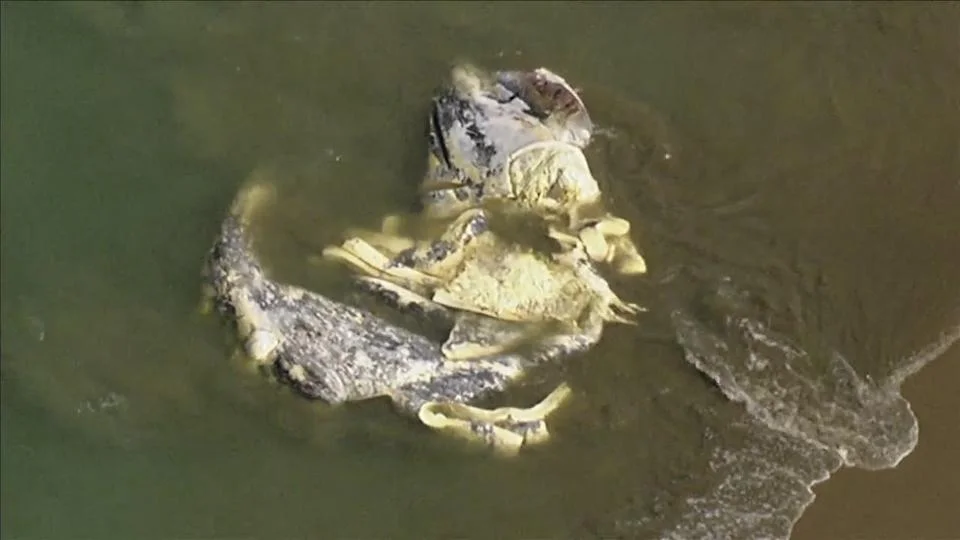
A Surge In Mysterious Whale Deaths Alarms California Coasts
The scenic beaches of California are confronting a somber mystery: in the past weeks, an unusually high number of dead whales have washed ashore, sparking concern among scientists, local officials, and beachgoers. From Huntington Beach in Southern California to San Francisco Bay in the north, the deaths highlight a potentially growing crisis affecting one of the Pacific’s most iconic marine species—and pose pressing questions about the health of coastal ecosystems.
This Friday, a dead 25-foot gray whale was discovered near Huntington Beach Pier, the second such incident in as many weeks in the area. Teams from the Pacific Marine Mammal Center (PMMC) responded promptly, cordoning off the area and undertaking a necropsy to determine the cause of death. Glenn Gray, CEO of the Laguna Beach-based nonprofit, reported no immediate signs of trauma from ship strikes, fishing gear, or shark bites. “It may take a couple weeks” for lab results, he stated, pledging to share answers with the public when available.

Further north, the shoreline of San Francisco Bay has seen a spate of grisly discoveries. Since March 31, four whales—including three gray whales and a juvenile minke whale—have washed up dead. At Crissy Field, the remains of a subadult gray whale drew a crowd; some, like visitor John Carig, were visibly moved by the encounter. “You can see the eye of the whale. I’ve never seen it [before],” he shared, reflecting on the sobering scene. Initial necropsy results suggested blunt force trauma, consistent with a vessel strike, but officials at the California Academy of Sciences cautioned that full test results remain pending.

Researchers are scrambling to understand the causes of this alarming uptick in strandings. Dr. Steven Swartz, a leading marine scientist, reports that at least 70 gray whales have died this year alone in Baja California’s lagoons—an important wintering destination—before migrating north along the coast. Notably, some carcasses appeared malnourished, raising suspicion of food scarcity or changing ocean conditions as contributing factors. Alisa Schulman-Janiger, who has coordinated Southern California’s gray whale census since 1979, revealed that this spring’s migration counts are the lowest on record—a potential red flag for the population’s overall health.
Authorities are taking action to protect both whales and humans. The U.S. Coast Guard broadcasts regular advisories for vessels in the Bay Area, while local municipalities like Huntington Beach have coordinated with the National Oceanic and Atmospheric Administration for responsible carcass disposal, often choosing to bury remains above the tide line.
While investigations continue, the wave of strandings underscores the vulnerabilities faced by marine giants in busy coastal waters. Is this year’s spike an anomaly, or an early warning of broader ecological strain? With migrations ongoing and necropsies pending, public attention remains fixed on the tide—and the fate of California’s gray whales.
What do you think is driving this unsettling pattern of whale deaths? Share your thoughts and join the conversation in the comments below.
Related issues news
What washed up on Huntington Beach?
A dead gray whale measuring about 50 feet in length washed up on the shore in Huntington Beach Friday afternoon, the city's fire department Marine Safety Division said in a social media post on Saturday.
Did a whale wash up on Huntington Beach?
A gray whale washed ashore in Huntington Beach on Saturday. It's not immediately clear what caused the creature to beach, just near Lifeguard Tower No. 5 and the pier, but wildlife officials could be seen surveying the area during the afternoon when SkyCal flew overhead.
What happens when a dead whale washes up on shore?
Wrapped in a thick blanket of blubber, the carcass retains its mammalian heat, and the process of decomposition takes place relatively quickly; once ashore, there is a risk of the swollen whale exploding.